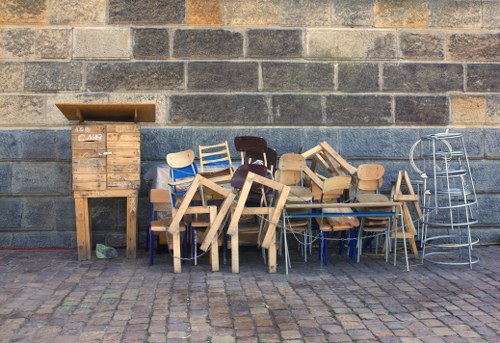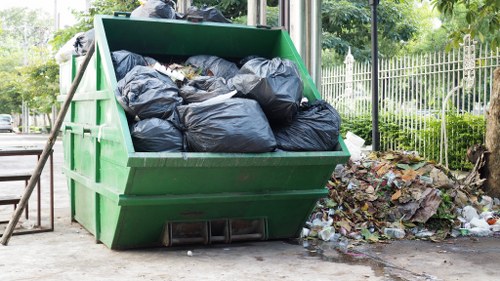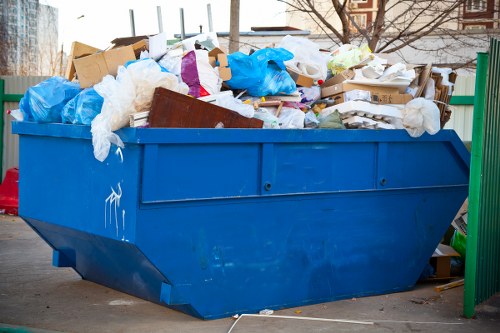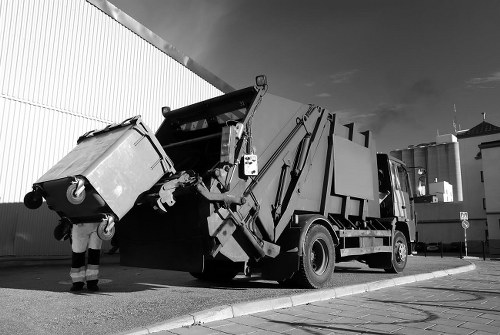Furniture Collection in Office Clearance

Office clearance is a critical process that involves the systematic removal and management of office furniture and assets. Whether you are relocating to a new space, downsizing, or shutting down operations, understanding how to effectively manage your furniture collection is essential. This article delves into the best practices, strategies, and benefits of efficient office furniture collection during clearance.
Proper office clearance ensures that valuable assets are preserved, disposed of responsibly, and that the transition is smooth for all stakeholders involved. It not only helps in maintaining an organized space but also contributes to environmental sustainability by promoting recycling and responsible disposal.
In this comprehensive guide, we will explore the various aspects of furniture collection in office clearance, including planning, execution, and post-clearance activities. By the end of this article, you will have a clear understanding of how to manage your office furniture effectively during clearance.
Planning Your Office Clearance

Effective planning is the cornerstone of a successful office clearance. It involves assessing the current inventory of office furniture, determining what needs to be kept, donated, sold, or discarded, and establishing a clear timeline for the clearance process.
Assessing Inventory: Begin by conducting a thorough inventory of all office furniture items. This includes desks, chairs, filing cabinets, conference tables, and any other movable assets. Categorize each item based on its condition, functionality, and relevance to the new office space.
Segmentation: Divide the furniture into categories such as essential, non-essential, and items to be recycled or donated. This segmentation helps in making informed decisions about what to retain and what to let go of.
Setting a Timeline

Establishing a realistic timeline is crucial for ensuring that the office clearance proceeds smoothly. Consider the following steps when setting your timeline:
- Initial Assessment: Allocate time for inventory assessment and categorization.
- Resource Allocation: Determine the manpower and tools required for the clearance process.
- Execution Phase: Schedule specific dates for the removal of furniture items.
- Final Review: Allow time for inspecting the cleared space to ensure nothing is overlooked.
By setting a clear timeline, you can coordinate with all parties involved and minimize disruptions to your business operations during the clearance process.
Executing the Clearance Process

The execution phase involves the actual removal and management of office furniture. This stage requires careful coordination to ensure that all items are handled efficiently and safely.
Hiring Professional Services: Engaging a professional office clearance service can significantly streamline the process. Professionals have the expertise and equipment to handle large volumes of furniture, ensuring that items are moved without damage.
Safety Measures: Implement safety protocols to protect both the employees involved in the clearance and the furniture being moved. This includes using proper lifting techniques and protective gear.
Transportation and Logistics

Efficient transportation is a key component of successful furniture collection during office clearance. Consider the following logistical aspects:
- Vehicle Selection: Choose appropriate vehicles based on the volume and size of furniture to be moved.
- Route Planning: Plan the most efficient routes to minimize transit time and avoid potential delays.
- Scheduling: Coordinate the timing of pickups and deliveries to align with your overall clearance timeline.
Proper logistics planning helps in reducing downtime and ensures that the clearance process is completed within the stipulated time frame.
Post-Clearance Activities
After the furniture has been cleared from the office, several post-clearance activities are necessary to finalize the process.
Inspection: Conduct a thorough inspection of the cleared space to ensure that all items have been removed and that the area is left in good condition.
Final Documentation: Keep detailed records of the clearance process, including inventories, transportation logs, and receipts from donations or sales. This documentation is important for financial tracking and future reference.
Disposal and Recycling

Proper disposal and recycling of office furniture contribute to environmental sustainability and can enhance your company's reputation. Consider the following options:
- Donations: Donate usable furniture to non-profit organizations, schools, or community centers.
- Recycling: Recycle materials such as metal, wood, and plastic to reduce environmental impact.
- Resale: Sell gently used furniture through online marketplaces or local furniture outlets.
Choosing eco-friendly disposal methods not only benefits the environment but can also provide financial returns or tax benefits for your business.
Benefits of Effective Furniture Collection in Office Clearance

Implementing a well-structured furniture collection strategy during office clearance offers numerous advantages:
Cost Savings: Efficient clearance can reduce costs associated with moving and disposing of items. Selling or donating furniture can also offset some expenses.
Space Optimization: Clearing out unnecessary furniture creates a more organized and productive workspace, whether in the current office or the new location.
Environmental Impact: Responsible disposal and recycling practices minimize waste and promote sustainability.
Enhanced Productivity

A decluttered office environment enhances employee productivity by reducing distractions and creating a more comfortable workspace. Removing outdated or non-functional furniture can lead to a more efficient and aesthetically pleasing office.
Employee Morale: A well-organized office fosters a positive work environment, boosting employee morale and satisfaction.
Professional Image: A tidy and well-arranged office space presents a professional image to clients and visitors, enhancing the reputation of your business.
Best Practices for Furniture Collection

To ensure a smooth and efficient office clearance, consider the following best practices:
- Early Planning: Start planning the clearance process well in advance to avoid last-minute issues.
- Clear Communication: Maintain open communication with all stakeholders, including employees, movers, and disposal services.
- Inventory Management: Keep an accurate inventory of all furniture items to track their status throughout the clearance process.
- Flexibility: Be prepared to adapt your plans as needed to address unforeseen challenges.
Adhering to these best practices helps in mitigating risks and ensuring that the clearance process is carried out effectively.
Utilizing Technology

Leveraging technology can enhance the efficiency of your office clearance process. Consider the following tools:
- Inventory Software: Use inventory management software to keep track of all furniture items, their conditions, and their destinations.
- Project Management Tools: Implement project management software to coordinate tasks, timelines, and responsibilities.
- Digital Communication Platforms: Utilize communication tools to facilitate clear and timely interactions among all parties involved.
Incorporating technology into your clearance strategy can streamline operations and improve overall effectiveness.
Choosing the Right Clearance Service
Selecting a reliable office clearance service is pivotal to the success of your furniture collection and overall clearance process.
Experience and Expertise: Look for companies with a proven track record in office clearance and furniture collection. Experienced professionals are better equipped to handle challenges and provide efficient solutions.
Comprehensive Services: Ensure that the clearance service offers a full range of services, including furniture removal, transportation, disposal, and recycling.
Cost Considerations

Budgeting for office clearance is an important aspect of the decision-making process. Consider the following factors when evaluating costs:
- Service Fees: Compare fees from different clearance services to find one that offers the best value for your budget.
- Additional Costs: Be aware of any potential extra charges for special handling, transportation over long distances, or disposal fees.
- Value Recovery: Consider services that offer furniture resale or donation, which can help recover some of the clearance costs.
Balancing cost with quality of service ensures that you receive effective clearance without overspending.
Environmental Responsibility

Environmental responsibility is increasingly important in office clearance. By adopting sustainable practices, your business can contribute to environmental conservation and demonstrate corporate social responsibility.
Recycling Programs: Partner with clearance services that prioritize recycling and environmentally friendly disposal methods.
Reducing Waste: Aim to minimize the amount of waste generated during the clearance process by opting for reuse and recycling of furniture items.
Eco-Friendly Disposal Methods

Implement eco-friendly disposal methods to reduce your office's environmental footprint. Consider the following approaches:
- Donate Usable Furniture: Identify furniture items that are still in good condition and donate them to charities or organizations in need.
- Recycling Centers: Utilize local recycling centers to dispose of materials responsibly.
- Green Certifications: Choose clearance services that have green certifications or follow sustainable practices.
Adopting these methods not only helps the environment but can also enhance your company's image as a responsible and ethical business.
Conclusion
Furniture collection in office clearance is a multifaceted process that requires careful planning, execution, and post-clearance management. By following best practices, leveraging professional services, and adopting environmentally responsible methods, businesses can ensure a smooth and efficient clearance process.
Effective office clearance not only optimizes workspace but also contributes to cost savings, enhanced productivity, and a positive environmental impact. By prioritizing these aspects, organizations can transition seamlessly to their new environments or conclude their operations responsibly.
Ready to streamline your office clearance process? Contact us today to learn how our professional services can assist you in managing your furniture collection efficiently and responsibly.